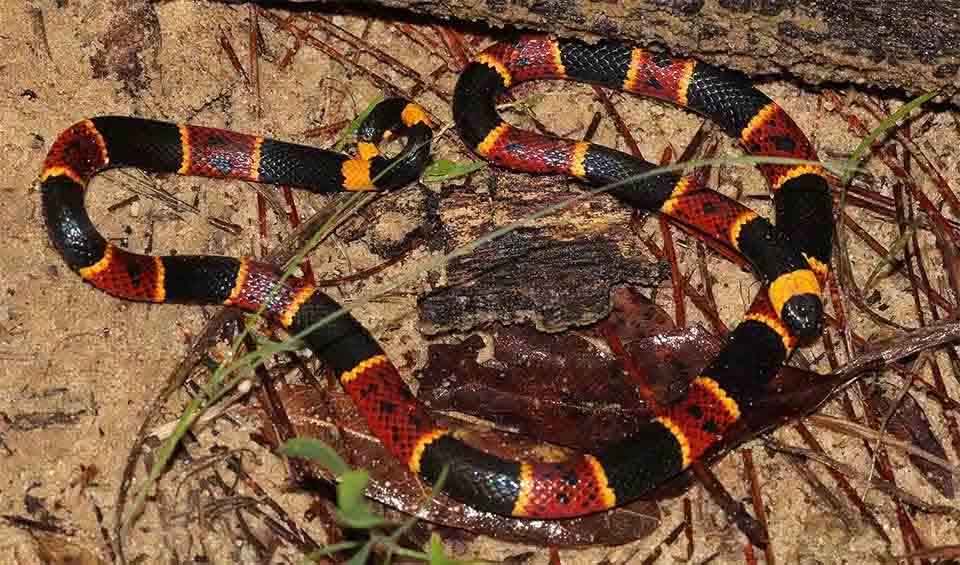Found in the southeastern United States, they inhabit forested, sandy, and marshy areas, where they can often go unnoticed due to their secretive nature and vivid, cryptic coloring. Their distinctive color pattern of red, yellow, and black bands is a warning signal to potential predators, indicating their venomous capabilities.
Eastern coral snakes are often mistaken for non-venomous species due to their similar color patterns. However, a helpful rhyme, “Red touch yellow, kill a fellow; red touch black, venom lack,” can assist in differentiating the Eastern coral snake from harmless mimics like the Scarlet kingsnake. Despite the rhyme’s usefulness in areas where Eastern coral snakes are found, it should not be universally applied to all coral snake-like species worldwide.
Their morphology, with rounded noses and bulbous heads that blend seamlessly into their bodies, can sometimes make distinguishing their head from their tail difficult, which they may use to confuse predators or prey. When threatened, they may elevate and curl the tip of their tail as a diversionary tactic, potentially allowing them to escape or prepare to bite.
Although their venom is highly toxic, bites from Eastern coral snakes are relatively rare due to their reclusive nature and tendency to avoid confrontation. However, if a bite occurs, it should be treated as a medical emergency due to the potency of the neurotoxins in their venom, which can lead to paralysis and respiratory failure.
Distribution
 Mexico
Mexico United States
United StatesAnything we've missed?
Help us improve this page by suggesting edits. Glory never dies!
Suggest an editGet to know me
Terrestrial / Aquatic
Altricial / Precocial
Polygamous / Monogamous
Dimorphic (size) / Monomorphic
Active: Diurnal / Nocturnal
Social behavior: Solitary / Pack / Herd
Diet: Carnivore / Herbivore / Omnivore / Piscivorous / Insectivore
Migratory: Yes / No
Domesticated: Yes / No
Dangerous: Yes / No




